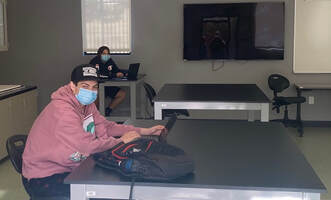 Administrator Karisa Scott was part of a Milpitas Unified School District Team conducting home visits to families facing challenges due to distance learning. Along with MUSD colleagues Norma Morales, Raquel Villalobos, Nicole Steward and Henry Robinson, Scott sometimes made multiple visits to the same homes for regular check-ins. “When we were doing home visits, the No. 1 thing after supplying them with the technology, hotspots and computers was that they needed more structured support for their children,” shared Scott, whose team has made upwards of 50 home visits since August. “They needed an alternative to learning from home, and this program is the impetus of that.” Scott started looking into options for in-person student support based on the feedback she received from families when Michael Mooney, the director of the San Jose City College-Milpitas Extension, told her that the Extension could be made available. “Campus supervisors at Calaveras Hills and Milpitas High School have stepped up and been amazing,” said Scott, who also welcomed MHS EL counselor Aldine Dimmick to supervise the EL cohort as well as regular support from Cal Hills Principal Carl Stice. “They make sure all of the safety guidelines are being followed at all times.” Opening up September 28 at the Extension, there are 37 secondary students and five on-site supervisors encompassing four separate cohorts. Three classes are open throughout the entire school day, while the fourth, targeting Thomas Russell Middle School students, runs from noon to 3:30 p.m. “A lot of the kids here have come out of those home visits,” Scott said. “Kids come and go because this is voluntary. We have some who have been here from the beginning, some who came in the beginning and have stopped coming in, and others who joined us later on.” One of the cohorts is dedicated to MUSD's English Language Learners whose families “expressed the greatest need,” Scott noted. “It’s hard when there is that language barrier and you are alone with a computer screen.” Families first must complete a permission slip for their students—who must submit daily health screenings, practice social distancing, and wear face coverings while participating in these learning pods. “I feel very confident in the safety procedures and protocols that we have in place here. It doesn’t stress me out,” said Scott, adding that desk shields provide an extra layer of safety at the pods. “We are really lucky here in Milpitas. We are always focused on what’s best for kids.” The small-sized learning pods have allowed Scott and other team members to make stronger connections with students who are struggling with their studies, some before the pandemic hit. “We get to know the families and that 10 percent of students who are struggling,” Scott said. “This has allowed us to prioritize these students, and it has made them feel important and shows them how much we care about them.” 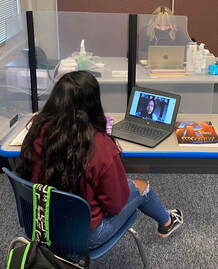 Robert Randall Elementary School Co-Principals Olivia Contreras and Kristan Prolo knew there would be many challenges for their students and families when Milpitas Unified School District committed to starting the 2020-21 school year in MUSD EducatEveryWhere with every student in distance learning prior to moving towards in-person support for those who are struggling with the virtual education environment. But the Randall leadership team is not one to shy away from challenges. Once the opportunity presented itself to allow for targeted in-person support for disengaged and struggling students, Contreras and Prolo put the word out amongst its Randall staff, as well as with the on-campus YMCA program. They also identified students in need of support for varying reasons such as having connectivity problems at home, parents are essential workers, and language barriers. “The biggest challenge to bringing students on campus is safety,” said Principal Prolo. “Our movement and behaviors are very restricted. It makes it a challenge even using the restrooms or walking the hallways or eating. It’s very limited.” Following Santa Clara County Public Health Department safety guidelines, the Two-way Bilingual Immersion School now has 45 students come to the Edsel Drive campus for in-person support—and it has already made a positive impact on student attendance and engagement. “The teachers and the parents do appreciate it,” said Principal Contreras, noting that roughly 50 percent of families have accepted invitations for in-person support thus far. “Not all the parents are agreeable to having their students come onto campus. They are still leery.” There are two second-grade teachers who host a handful of students in their classrooms for a full school day, with another Randall colleague scheduled to soon begin with sixth-grade students weekdays from 8:30 a.m. to 12:30 p.m. At the YMCA, the bilingual staff supervises students who range from transitional kindergarten to sixth grade. Randall is one of several MUSD campuses hosting some form of targeted, in-person instruction. “We have multiple sets of siblings, and for them it’s a night-and-day difference,” Principal Prolo shared. “They went from having very challenging attendance issues to being connected and engaged.” Randall staff perform daily health screenings for those students coming onto campus. Everyone must follow the safety protocols, such as maintaining a 6-foot social distance and wearing face coverings at all times. In addition, protective desk shields have been installed for students and staff. There is a capacity of up to 12 students per classroom. Contreras added that a majority of the Randall teachers already utilize their classrooms as teaching studios during the school day. This is one of the milestones along our journey together in COVID19. Superintendent Cheryl Jordan shared the next steps in the Milpitas Unified School District’s Phasing In 2020-21 Plan, as well as experiences with the ongoing, in-person support learning labs at various school sites, in her COVID-19 Report on November 10.
“Our team members are really concerned about safety for all and safety for themselves. It’s imperative for all of us to ensure that safety protocols and measures are in place, internalized, and practiced,” Superintendent Jordan said. “In order for us to launch Phase 3, we have to be assured that people are practicing safety measures.” Phase 4, which advances the hybrid instruction to include middle school and high school students, depends on what tier the County is designated within the Blueprint For A Safer Economy, as well as the capacity of MUSD classrooms to allow for social distancing. Daily health screenings for all students and staff, maintaining social distancing, wearing face coverings, and frequently washing hands, along with safety audits for all MUSD schools and classrooms, must be followed at all times. “It takes every single one of us,” Superintendent Jordan said. “Milpitas is a special place. It’s special because there are so many of us that really hold Milpitas in our hearts and really have an open mind about living and learning with each other.” Currently, 203 MUSD teachers and paraprofessionals, which makes up about ⅓ of the teaching staff, are using their classrooms as teaching studios. Of those, 35 educators are providing some form of in-person support to 204 learners on school campuses. “Since Phase 2 in the beginning of October, we have had no COVID cases amongst that group,” said Superintendent Jordan, who wants to double the number of staff utilizing classrooms for teaching studios. “This COVID data lets us see what’s happening as we have been working to provide some personal touch that is in-person as well as distance learning.” In addition, 16 team members have supervised 54 preschool students at the Rose and Sunnyhills Child Development Centers since March, with no COVID cases. At Randall and Rose elementary schools, where the district partners with the YMCA, there have been zero cases amongst 60 learners, with six YMCA staff on site. In October, MUSD launched learning pods at Calaveras Hills High School for elementary school students and at the San Jose City College-Milpitas Extension for secondary students. At CHHS, 20 learners guided by five team members have experienced one COVID case that required the pod to be shut down for quarantine purposes per Santa Clara County Public Health Department Exposure Guidelines. It has since reopened with no further issues. At SJCC Extension, 33 learners with four team members providing in-person support have endured a single COVID case that did not require a shutdown per SCCPHD. Additionally, two COVID cases were reported among MUSD staff not working directly with students. “What we’re focusing on now is inviting more of our team members to use their classrooms as teaching studios without any students in them,” explained Superintendent Jordan, whose goal is to have every MUSD student engaged in learning each school day. MUSD plans to reconvene its COVID-19 Advisory Task Force Subcommittees to revisit and revise hybrid in-person instruction plans as the phasing in moves forward based on the conditions in the county. “Like our (military) veterans who dedicate a good part of their lives to serving our country, our teachers, classified team members and all that make up the MUSD Team also dedicates a tremendous part of their lives to serving our community by educating our students,” said Superintendent Jordan, who will share another COVID-19 update at the November 24 meeting. “We must think about safety and we must think about keeping the virus suppressed.”  By Mehak Garg MHS student In March, many referred to the global situation of social-distancing protocols, masks, and quarantining as “the new normal.” Schools were scrambling to put together online instruction, working parents were grappling with child care, and everyone was uncertain about what the next few months would look like. Now, as we reflect on the past seven months, our situation has become “normal.” Spending our whole day on Zoom is no longer new and leaving our house with a mask just as we would with our car keys is no longer a novel idea. Going back to school this fall warranted a more developed plan for what online instruction would look like and Milpitas High School delivered on that. However, before we disrupt our “normal,” we need to consider what in-person instruction looks like. Before allowing the entire student body to return, Milpitas High School should allow students who are struggling to learn in an online environment and need in-person instruction to return. Having a small percentage of students enter campus in comparison to over 3,000 students will allow administrators to see what improvements that might need to be made and what’s already going well. In regards to faculty, teachers who are more at risk of contracting COVID (older individuals or teachers with preexisting conditions) should continue to stay home. I think when the county decides that it’s okay for students to return, Milpitas High School should give all students the opportunity to come back although online learning should still be available at that point for those who have an increased risk of acquiring COVID to ensure everyone’s safety. At school, lunch tables and seating areas should be sectioned off to ensure social distancing and students should wipe down desks before leaving for their next class. Additionally, desks in classrooms should be spaced out and class sizes should be reduced which can be achieved by separating students by first or last name to certify fewer students are on campus at one time. I’d love to go back in-person second semester but only when it’s safe for all students and faculty.  By Matthew Nguyen MHS student First and foremost, I believe that a return to in-person education at Milpitas High this school year will be improbable and not a smart decision. While there is much to gain from in-person teaching, there are many more downsides and risks. The argument for going back to in-person school is that students will learn more and will be more engaged in class. There are more advantages like socializing with other students and getting out of the house, but for the most part this is the main argument to go back to in-person education. However, the Milpitas Unified School District has done a tremendous job by implementing the distance learning system. At least in my opinion, I am still learning a lot during school. Yes, there are more distractions at home and less peer assistance, but at the end of the day, the learning experience is dictated by the student. Students make the decision to either actively participate in Zoom class and stay focused or doze off. One can even argue that going back to school and seeing your friends may serve as an even greater distraction from actual education. There is just so much to lose if we go back to school, for all parties involved. Remember that Milpitas High alone has over 3,000 students. The crowded campus will make the risk of contracting the coronavirus very high. And although students might be young enough to fight off the virus, the older members of their family will not fare as well in such a fight. However, in the case that the decision is made that we go back to in-person school, I have some suggestions. The obvious first step in my opinion is to put students back into classes extremely slowly. The students going back should not have any relatives at home who are in bad physical condition or are over a certain age. Depending on the results of the first set of students, you can start trickling in more starting by graduation year. First, the seniors can go, then the juniors, and so on. Every desk should have a surrounding plastic screen as well as be 6-feet apart. Temperature checks should be taken before and after class. The mingling around during the passing period should be kept to a minimum. This means that people must be socially distanced during breaks as well. Overall, is going back to in-person learning really enough to justify taking all these measures? In my opinion, no, it is not. To reiterate my point, going back to school is not a smart move especially considering the great job EducatEveryWhere has been doing.  By Emma Whitmer MHS student COVID-19 has brought many changes to our lives, and the closure of schools is one of the most impactful. While it seemed like students would be going back to school at the start of the new school year, we are still learning online. In September, I was ecstatic to find out that schools could start reopening in our county, but our district has not yet given us a date on when our schools will open. I understand that MUSD can't rush this process, but I find myself growing tired along with many other students. Online learning is challenging everyone in every aspect. We have to deal with loud noises, loss of motivation, and isolation from a standard classroom environment. I wake up to go to classes that are almost two hours long while I hear loud noises echoing throughout the house. It’s hard to focus, especially when taking assessments, and it’s getting increasingly difficult to stay on task. I’ve noticed a lot of my peers have mentioned they aren’t as motivated because online learning sticks us into a tiresome schedule of listening to long lectures. The flavor that socialization brought to an otherwise dull school day is now gone. I'm no expert on proper COVID-19 safety protocol, but I do have some suggestions on the reopening of schools. To start, I think students should wear masks and practice social distancing if we were to return to school. Masks control the spread of the virus, so I think they are vital for reopening campuses. The district could send out surveys, asking if they have had any exposure to the virus or if they have any concerns. Also, temperatures can be taken by teachers to ensure no one is sick. People who want to stay home and people who are more susceptible to the virus can continue learning online. Overall, I believe that the return to school can be safe should the proper measures be taken.  By Cody Lejang MHS student It is inevitable that students will have to return to in-person learning. The combination of lockdown, in addition to the increased workload stemming from distance learning, has been detrimental to many students. Students have increased anxiety because they are not able to interact with their peers in person. Teachers have had to come up with impromptu methods of administering tests and assessments. More specifically, lab science teachers have had the hardest task of figuring out a way to do labs virtually. Therefore, it is of utmost importance that the school administration figures out how to transition students back into hybrid and potentially in-person learning. However, for this to occur, safety precautions must be taken. For example, a mask requirement, daily temperature screenings, regular sanitation, and social distancing mandates are paramount methods of preventing and reducing the spread of COVID. Most importantly, the enforcement of these regulations must be strict and efficient, in order to ensure the safety of MHS’s students and staff. Students, along with their parents, should closely observe, obey, and understand the safety protocols. A potential problem that arises when transitioning back to in-person learning is the difference in workload and pace. Relatively speaking, students will be entering a more lecture-heavy environment, in comparison to the previously workload-heavy environment of distance learning. Several dilemmas can stem from this: students may lack motivation in the classroom, experience an increase in stress, or simply fall behind in the curriculum. As a result, tutoring and/or student mentor programs need to be created in order to help students that are struggling to switch gears from distance to in person learning. Additionally, this can be an opportunity for students who are excelling academically to help others, in exchange for community service hours. Ultimately, reopening school will only yield positive outcomes, as long as students and staff comprehensively follow the necessary safety procedures. There needs to be a mutual respect and understanding of the enforced guidelines and the severity of the consequences.  Aven Magana, Assistant Principal of Adult Education and Corrections with 24 years of education experience including the last three with MUSD, recently took on the role as the Superintendent's designee as liaison to the County Public Health Department for COVID-19 for the 2020-21 school year. “My role as Covid Designee consists of a variety of functions,” said Magana. “I monitor the student and staff daily health screenings, follow up with anyone who may not feel well, report any confirmed positive cases of a student or staff member, determine close contacts, and report and monitor any student, staff member, or cohort that may be affected.” Magana, who is the first person all employees call if they suspect a case of potential COVID-19 exposure, acts as the liaison between MUSD and the Santa Clara County Public Health Department. As the Designee, she works with the MUSD Reporting team of an Alternative Designee/Human Relations, a Second Alternate/Communications, Supervisors of Maintenance and Operations, Site Administrators and District Managers, and School Nurses. She gathers details and reports cases through the SCCPHD portal. In addition, Magana—a co-lead on the MUSD SafetyFirst Team who has trained with Public Health experts on safety procedure—provides appropriate scenario letters to site administrators and nurses; monitors the quarantine / isolation periods for cohort groups; and assists in monitoring MUSD health screenings. Magana attends weekly COVID Designee meetings with Public Health Officials to obtain the latest information released. In addition, Magana, who is certified in CPR and First Aid, is trained in Standardized Emergency Management Systems, and organizes MUSD site drills such as earthquake and Intruder. Milpitas High School senior S’ven Morley loves to fly drones. Milpitas Xtreme Robotics Club President Kalino Ruiz enjoys combat robotics. Trojans’ junior Kathan Sheth relishes a good challenge, and Club Secretary Aisha Jaffrey appreciates the intra-club battles.
Every member of MXR eventually finds their niché within the official robotics club of Milpitas HS, and all of them savor the camaraderie amongst members. “To be honest, I didn’t know what I wanted to do in college while in high school. I just knew it was something in engineering and MXR gave me the opportunity to explore them,” said MXR co-Vice President Nicholas Azpeitia. “It gave me an outlet and community of people I love. ...It’s really great to see everyone learning from and helping each other.” MXR recently launched a free virtual App Development Class, which has attracted nearly 50 Milpitas Unified School District 6th through 8th grade students. Some will be the future leaders of MXR who will continue “to discover, create, or nurture a passion for what Silicon Valley is famed for—technology.” “Many kids like using apps, so we thought why not teach them how to do it themselves,” said Kathan, who will help introduce middle schoolers to block coding, the basics of robotics, and other programming. “We will take a beginner’s approach to app development using ‘MIT App Inventor’ to create apps.” In addition to this, MXR—which produced about 300 face shield braces on 3D printers that were distributed to front-line workers battling the pandemic—is in the early stages of creating a technology literacy workshop for students, teachers and parents. “I’ve been involved in MXR for the past four years. I was introduced to it my freshman year, and instantly I got hooked,” said Kalino, whose interest in robots began as early as age 3. “I’ve just really always been into robots and engineering, so MXR was a real good fit for me. ...I’ve just grown to love the club.” As lead for the Combat Robotics Team, Kalino passes along his knowledge of CADD (computer-aided design and drafting) to members. “We create custom-built robots designed to compete in gladiatorial arenas and competitions,” Kalino enthusiastically shared. The big competition comes annually in February with 15-pound bot battles. Right before the pandemic suspended in-person events, MXR battled high school and college teams in Rocklin, earning a $500 innovation award in the process. From land to air, S’ven and the Drone Team—which took off last school year for the first time—compete in a different arena altogether. Limited by the pandemic restrictions, team members work daily on upgrading their drone and, every month or so, venture out for test flights at Baylands Park. “It’s a mix of awesomeness and being scared because you don’t want to crash,” said S’ven of piloting a drone. “It’s fun to teach people how to fly and take it up in the air. We take turns flying around and teaching others.” Kathan, who heads up MXR’s VEX Team, conducts online classes teaching CADD and programming to members. In this competitive robotics realm, teams are presented with a new challenge each year and work together to build a robot to best complete that challenge. “This year, I am training new members to make sure we secure the next generation to take over VEX,” said Kathan, whose team qualified for the Worlds competition last year for the first time, “so we are looking forward to competing again this year.” Another MXR competition team is FTC (First Tech Challenge), which tasks team members with building a robot to complete different obstacles. And when they are not competing against other school teams, MXR members team up to battle each other in intra-club robotics wars each year. Learn even more about MXR at: https://mxrmhs.wixsite.com/robotics Brett Webber, an English teacher at Milpitas High School, loves his Swivl—and his students are reaping the benefits.
“With Distance Learning, teachers have been chained to our desks, stuck behind a screen, wearing headphones and talking to a microphone, making teaching a rather static and impersonal activity,” Webber said. “But the Swivl has changed that for me—it has liberated me from my chair, and taken me back to where and what I do best: in front of my students as a live, walking, talking teacher!” A Swivl is a robotic mount for an Ipad, camera, or smartphone that comes with a remote control Marker. It is designed to track and, with the video capture abilities of the other device, record videos of a moving person. It was designed to capture presentations. Teachers can record their lectures and make them available for students online; either for review or to help an ill student catch up. “I can move around, walk to the whiteboard to draw pictures, write up vocabulary, and act out my lessons for my students, just as I would have if they were in front of me,” Webber said. “The ability of the Swivl to follow me around has re-energized my teaching, and I am much more animated and active than before—back to the way teaching should be!” The Swivl allows Webber to present to his class in similar fashion as he would if they were in the same physical classroom. Webber can hold the book, walk around, and be animated; more so than just sitting at his teacher’s desk in front of a stationary computer screen. “They can see around my classroom, and the lessons come to life. They are now a part of the class and engaged in the material, not just watching me sit,” Webber added. “This is truly technology helping education be more effective and efficient, but it has also reinvigorated me to be a better teacher in a less-than-perfect environment.” A half dozen Milpitas Unified School District students were among the 2020 honorees at Assemblymember Kansen Chu’s 6th Annual Community Heroes Awards for their service and dedication to the local community.
Nima Bhavansikar, Nyla Choates, Chloe Wang, Amy Stanley, Rachel Wu and Amy Zheng exemplified MUSD’s Culture of WE in their humanitarian efforts. They received their recognitions during a drive-through ceremony held outside the San Jose City College-Milpitas Extension. “Throughout all the unfortunate events, it has been inspiring and heartwarming to witness members in our community work together to help those in need,” Assemblymember Chu said. “These heroes were nominated and picked by the people living in our community for their acts of kindness.” Bhavansikar, a sixth-grade student at Alexander Rose Elementary School, started a fund to support the Milpitas Food Pantry through her Shirts for Smiles endeavor. She designed shirts with all proceeds benefiting the pantry. In addition, she teaches kindergarteners and first graders in the Brain Builders Program. Nyla Choates, a senior at Milpitas High School, founded the nonprofit My Roots are Rich, which works to show all people the culture and historical achievements of African Americans. The MHS Black Student Union President was the lead organizer of the Black Lives Matter demonstration in Milpitas earlier this year. Amy Stanley, a MUSD Student Board Representative, founded ProjectMaskify, a youth-led movement that has made and donated more than 4,000 masks to frontline workers in the local community. The MHS student leader is President of the MHS STEMgirls organization that has helped inspire more than 150 Bay Area students through STEM education. Chloe Wang, a MHS alumna, shares her passion for STEM and business with younger students, while also teaching classes in entrepreneurship, technology and robotics. During the COVID-19 crisis, Wang organized donations of Personal Protective Equipment (PPE) to hospitals to protect frontline workers. Rachel Wu, MHS student leader with the Milpitas Debate Program, organized a free public speaking program for 400 elementary and middle school students. During the pandemic, she offered free online classes in public speaking. Amy Zheng, also a student leader at MHS, offered free online learning services for Milpitas students as a mathematics tutor in addition to teaching classes in drawing, origami, and cooking. In addition, she volunteers regularly to clean up at Augustine Park in Milpitas. MUSD provides hotspots, Chromebooks to improve connectivity for most vulnerable students
A COVID-19 Education Partnership Grant, through the Silicon Valley Community Foundation, continues to impact the lives of many Milpitas Unified School District students in different ways from providing wifi hotspots and Chromebook laptops to enhancing online instruction to purchasing gift cards for everyday essentials. Up in the hills next to Felter Road, MUSD’s Tech Team of Director Chin Song and Network Manager Thao Xiong provided a reliable connection, as well as devices, for three students who were unable to log-in for their classes. “We initially tested with a hotspot, followed with a directional antenna to find a better signal strength, then finally settling with a higher-powered cellular modem to optimize the signal around the hills,” Song explained. “It provided a stable connection for the students to complete their learning.” MUSD has provided more than 200 hotspots to families since March. Earlier this month, Secondary Community Liaison Norma Morales and Board of Education President Hon Lien hand-delivered wifi hotspots to a pair of Milpitas Unified School District families in need of internet access for distance learning. Both MUSD families resided in multiple-family, shared dwellings while experiencing economic hardships and added stress due to job loss amid the pandemic. This forced them to prioritize their financial needs, with internet access not at the top of that list. When students in these families began to log-in for classes with less frequency, Morales sprung into action and reached out to them to see how the district could help. One student, a Guatemalan refugee whose first language is a Mayan dialect called K'iche', was having trouble following online instruction, consistently accessing the internet, and changed his home address. After unsuccessful phone calls and home visits, Morales was able to make contact and, on October 10, brought the student a wifi hotspot to use with his MUSD-issued Chromebook. She also included gift cards and information about utilizing the Milpitas Food Pantry. “I was so glad we were able to help him out,” said Morales, who one day earlier delivered a hotspot to the other MUSD family struggling with finances and consistent internet access. “Any little bit counts. It can make a big difference in their lives.” |
NOTICE OF PUBLIC HEARING:
The governing board of Milpitas Unified School District will hold a Public Hearing on Tuesday, June 28, 2022. Media ResourcesArchives
July 2024
Categories |
Milpitas Unified School District
|
|

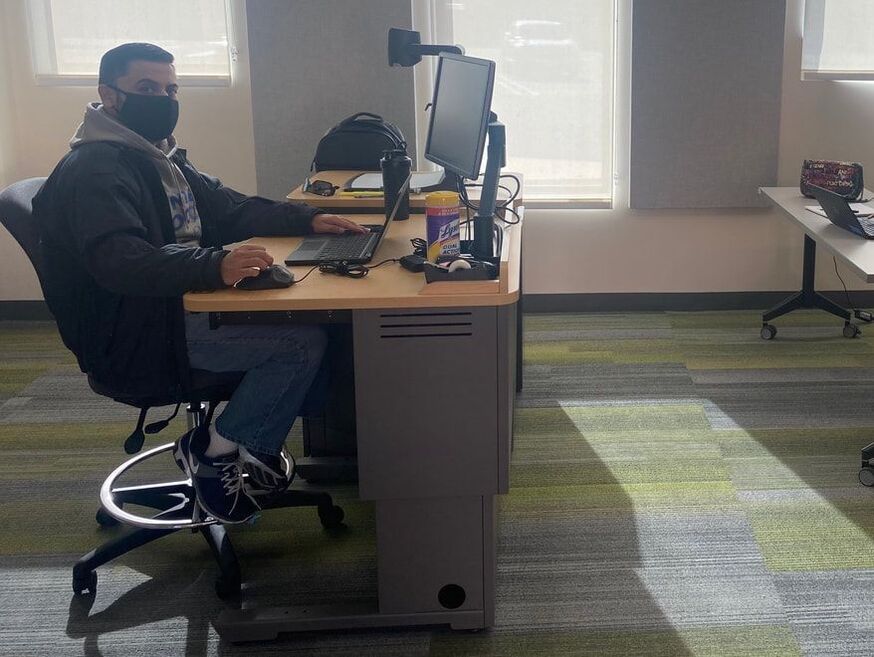
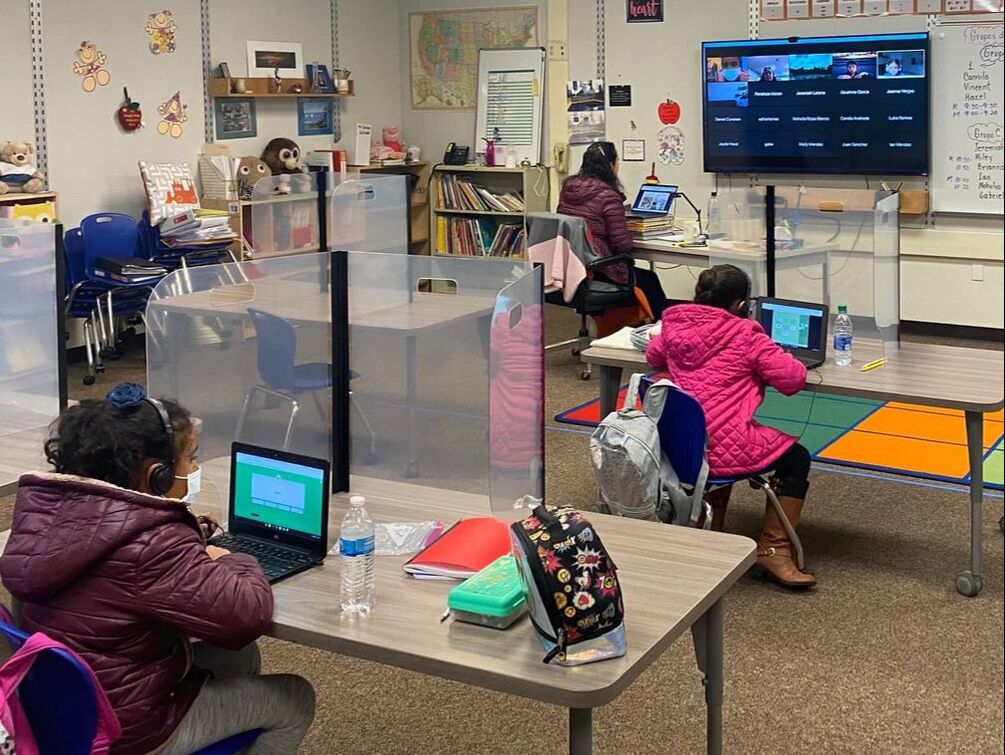
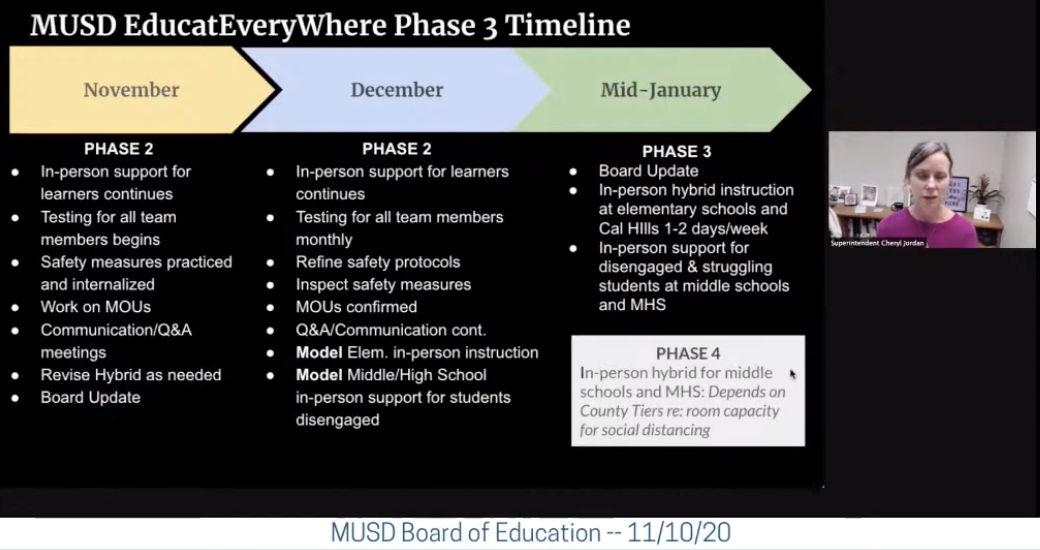
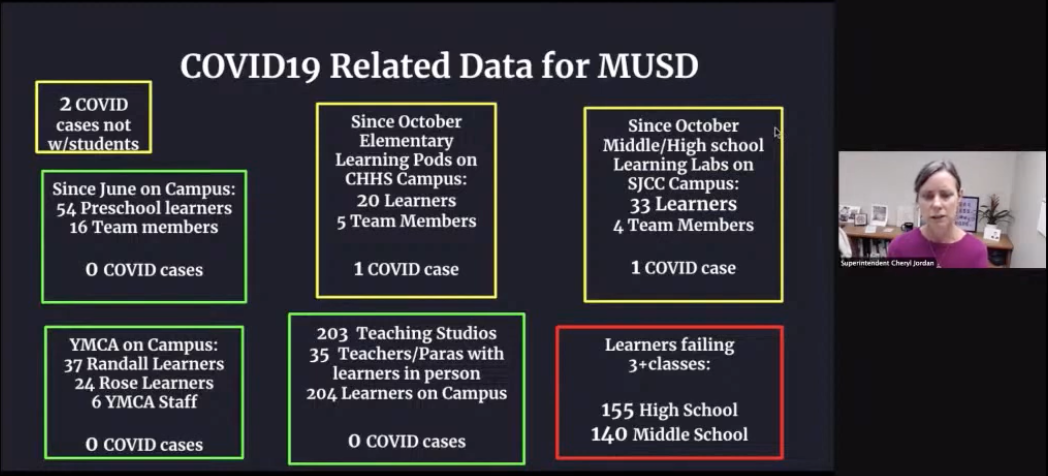
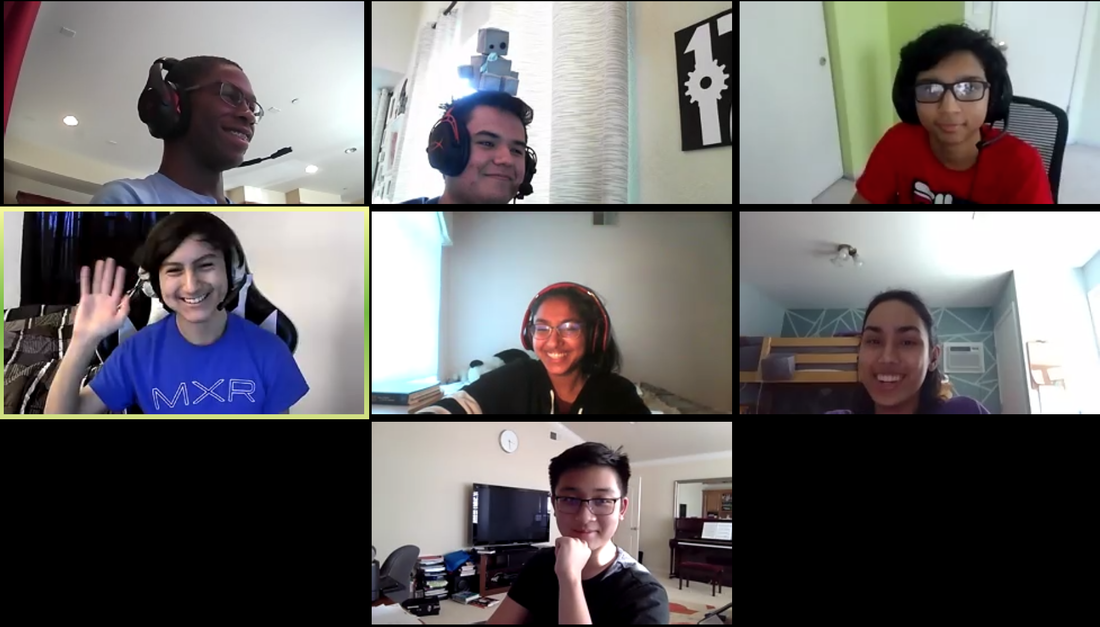
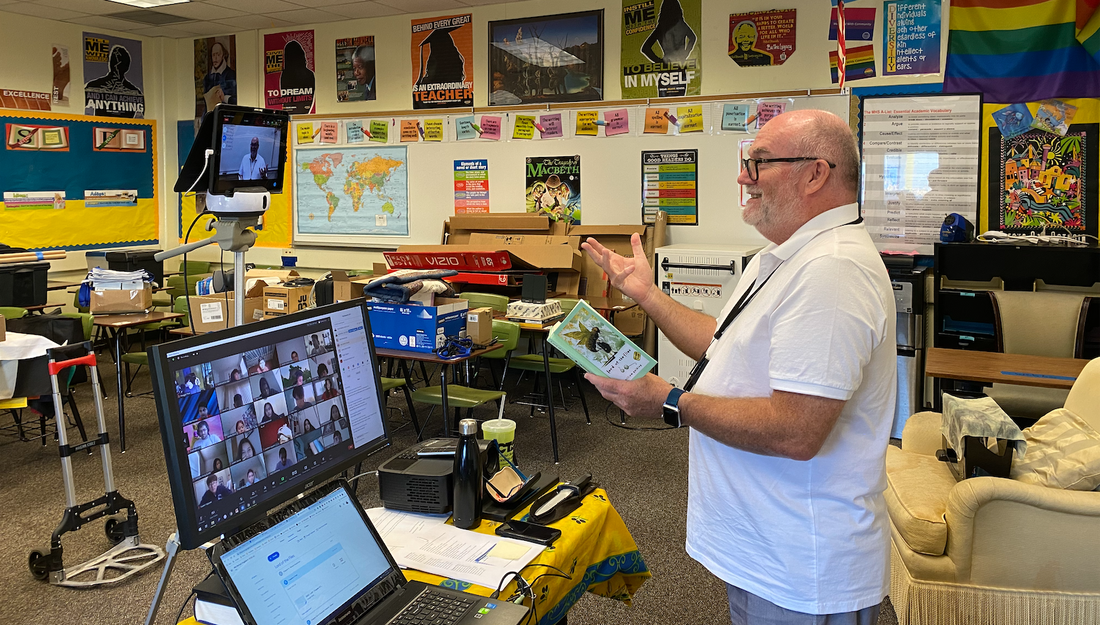

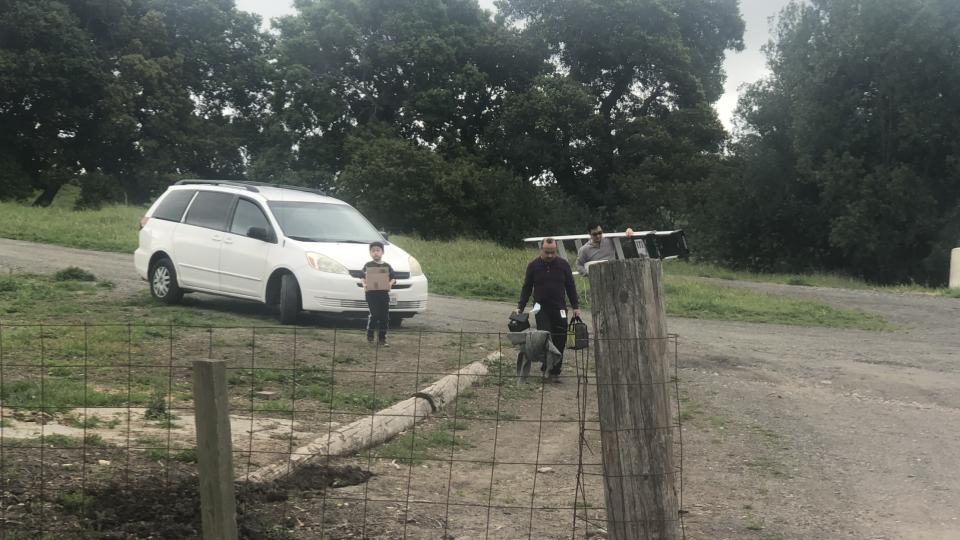
 RSS Feed
RSS Feed
